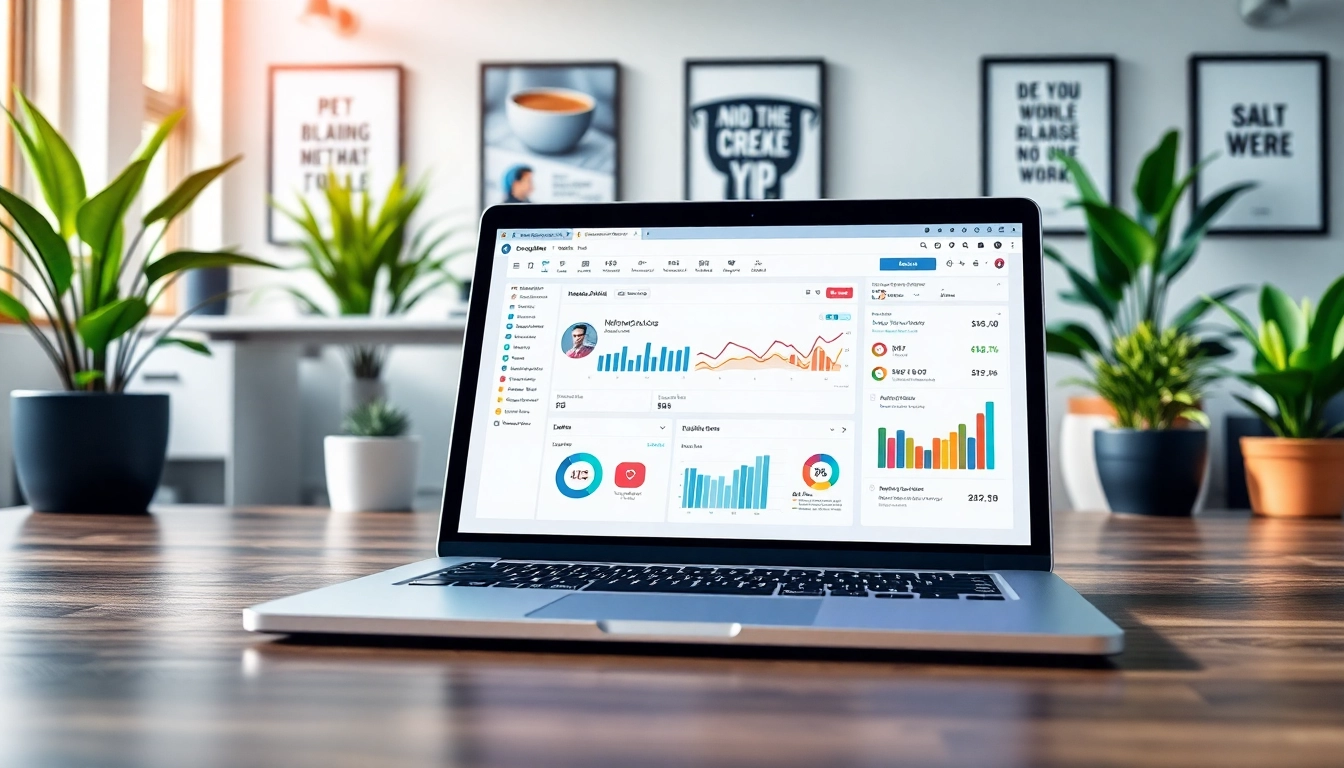Understanding Competitor Pricing Analysis
What is Competitor Pricing Analysis?
Competitor pricing analysis is a strategic evaluation wherein businesses assess the pricing structures of their key competitors. This comprehensive study not only involves gathering current price points for similar products and services but also analyzing historical pricing trends and promotional strategies. By conducting this analysis, companies can position their offerings effectively within the market, ensuring that their prices are competitive while reflecting the value provided to customers.
The aim of a competitor pricing analysis is to provide actionable insights that inform pricing strategies. This process goes beyond mere observation of competitor prices; it also encompasses understanding the market dynamics, consumer perceptions, and potential pricing shocks that may arise from competitors’ actions.
Importance of Competitor Pricing Analysis
Conducting a competitor pricing analysis is crucial for several reasons:
- Market Awareness: Understanding how competitors price their products helps businesses remain aware of market conditions, fosters agility in pricing decisions, and enables quick responses to shifts in consumer demand or competitor pricing changes.
- Value Proposition: By analyzing competitors, companies can evaluate their own value propositions and adjust their offerings to highlight unique features that justify pricing differences.
- Strategic Positioning: Competitor analysis allows firms to find their niche in the market, enabling them to position their products effectively by aligning prices with target customer segments.
- Profit Maximization: Effective pricing based on thorough analysis can lead to enhanced sales volume and profit margins by ensuring that prices are competitive yet profitable.
Key Metrics to Track
When performing a competitor pricing analysis, certain metrics are crucial to track:
- Price Points: Simple yet essential, knowing the price ranges of competitor products allows you to establish a pricing framework for your business.
- Discount Rates: Understanding the promotion landscape, such as how much competitors discount their prices during sales, provides insight into effective marketing strategies.
- Bundle Offers: Evaluating how competitors bundle products or services can uncover opportunities for your own bundling strategies.
- Customer Feedback: Analysis of customer reviews can reveal insights on perceived value and satisfaction concerning price.
Methods for Conducting Effective Pricing Analysis
Data Collection Techniques
Success in competitor pricing analysis largely depends on the robustness of your data collection techniques. Here are effective methods:
- Web Scraping: Automation tools can be used to extract pricing data from competitor websites, enabling real-time tracking of price changes.
- Competitor Websites: Regularly visiting competitors’ e-commerce sites can provide valuable insights on current pricing structures.
- Trade Shows and Marketplaces: Engaging directly with product displays at industry events often reveals pricing and promotional strategies firsthand.
- Surveys and Customer Feedback: Collecting information from customers can help analyze perceived value and satisfaction related to competitors’ pricing.
Leveraging Technology and Tools
There are numerous tools available that assist businesses in conducting pricing analysis:
- Price Monitoring Software: Tools like Price2Spy allow businesses to automate the tracking of competitor prices, providing real-time analytics.
- Market Research Platforms: Services like Statista and Nielsen offer valuable data regarding industry pricing trends over time, enhancing your historical understanding.
- Social Listening Tools: Platforms such as Hootsuite can capture customer perceptions and sentiments about pricing and value in real-time across social media.
Analyzing Data for Insights
Once data is collected, the next step is analysis. Here’s how to derive meaningful insights:
- Comparative Analysis: By placing your pricing next to competitors’, you can identify positioning and potential pricing anomalies.
- Price Elasticity Analysis: Understanding how sensitive your customer base is to price changes can guide your pricing strategies.
- Trend Analysis: Observing historical price trends alongside seasonal fluctuations can help identify the best times to adjust your pricing strategy.
Challenges in Competitive Pricing Analysis
Common Pitfalls to Avoid
Conducting competitor pricing analysis comes with its own set of challenges. Here are some pitfalls to be aware of:
- Over-reliance on Competitor Data: Relying solely on competitor pricing can lead to uninspired pricing strategies that fail to resonate with your unique value.
- Lack of Context: Simply knowing competitor prices is not enough. Understanding the context, such as their customer base and product offerings, is crucial.
- Focusing Only on Price: Overemphasis on price can divert attention from other critical factors like quality, customer service, and brand loyalty.
Dealing with Inconsistent Data
Inconsistent or outdated data can significantly impact the accuracy of your analysis. Here’s how to manage it:
- Regular Updates: Establish a routine for gathering updated data to ensure continued accuracy in your analysis.
- Multiple Sources: Use a combination of data sources to validate pricing information and enhance accuracy.
- Implementing Technology: Utilizing technology—such as APIs and web scraping tools—can help automate data collection and reduce human error.
Understanding Market Dynamics
The market landscape is constantly shifting, affected by a plethora of factors, such as economic trends, consumer behavior, and technological innovations. A few tips to stay ahead include:
- Regularly Review Market Conditions: Staying updated with industry news can help predict upcoming market changes and adjust pricing strategies accordingly.
- Seek Customer Input: Engaging directly with customers through surveys can provide insights into shifts in demand and preferences.
- Monitor Economic Indicators: Understanding broader economic trends can impact pricing strategy, particularly during economic downturns.
Implementing Your Pricing Strategy
Integrating Analysis into Business Decisions
After gathering and analyzing data, the next step is to translate insights into actionable strategies:
- Engage Cross-Departmentally: Integrate insights across various departments—such as marketing, sales, and product development—to support cohesive strategies.
- Dynamic Pricing Models: Consider implementing dynamic pricing models that adjust according to competitor movements and demand trends.
- Regular Training: Equip the sales and marketing teams with up-to-date pricing strategies and rationale to maintain consistency in messaging.
Testing and Refining Pricing Strategies
At this stage, testing your pricing strategy will help determine its effectiveness:
- A/B Testing: Implement A/B testing for different pricing models to gauge customer reactions and revenue impacts.
- Customer Feedback Loops: Establish a system to gather customer feedback after price changes to evaluate satisfaction and perceptions.
- Monitoring Competitor Actions: Keep an eye on how competitors react to your price changes, as this can also inform your ongoing strategies.
Evaluating Competitor Reactions
Competitor responses to your pricing changes can provide valuable insights:
- Social Media Monitoring: Follow conversations and sentiments regarding competitors’ price changes on social media platforms.
- Sales Trends Analysis: Use sales data pre-and post-price adjustments to identify shifts attributed to competitor adjustments.
- Market Observations: Attend trade shows and industry events to observe direct competitor reactions and potential market shifts.
Measuring the Impact of Your Pricing Analysis
Key Performance Indicators for Success
To ensure that your pricing strategy is truly effective, it’s important to track specific Key Performance Indicators (KPIs):
- Sales Growth: Analyze overall sales growth after implementing new pricing strategies.
- Customer Retention Rates: Track whether pricing changes impact customer retention and loyalty over time.
- Market Share: Understanding shifts in market share can help measure the efficacy of your pricing relative to competitors.
Collecting Feedback from Customers
Customer feedback is invaluable for assessing and adjusting your pricing strategy:
- Surveys and Questionnaires: Create customer surveys post-purchase to gauge their perception of value at the set price.
- Net Promoter Score (NPS): Monitor NPS to measure customer loyalty and satisfaction concerning price.
Adjusting Strategies Based on Market Response
Finally, it’s critical to remain adaptable and ready to adjust your strategies based on market response:
- Ongoing Analysis: Continuous monitoring of market data, competitor pricing, and customer feedback should inform regular strategy adjustments.
- Flexibility in Pricing: Be prepared to modify your pricing strategies based on emerging trends and customer needs.
- Evaluate New Offerings: Periodically assess the market for new product offerings or features that may warrant repricing or new pricing strategies.













Leave a Reply